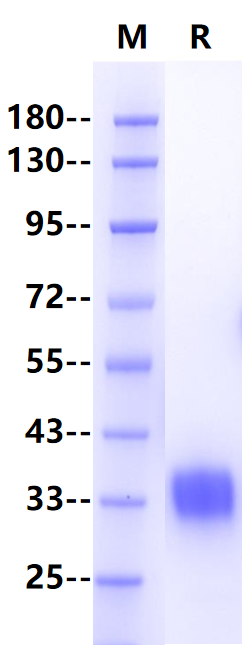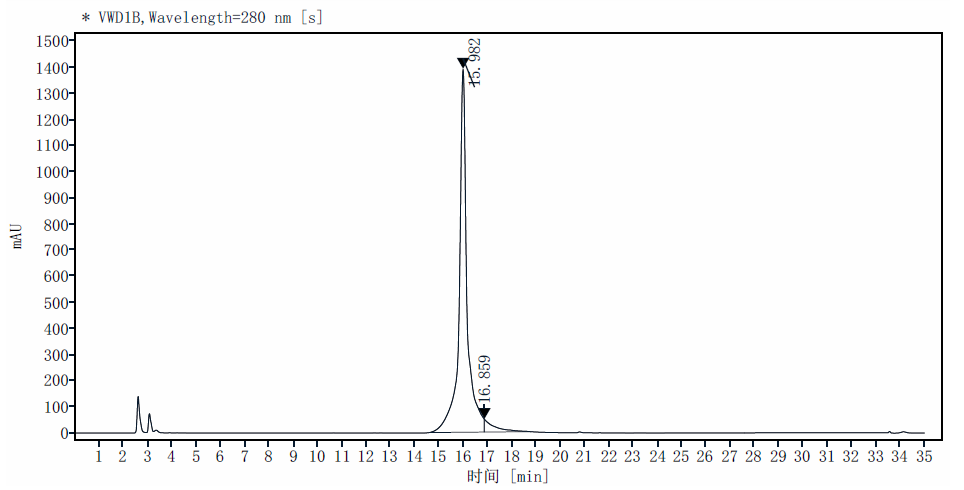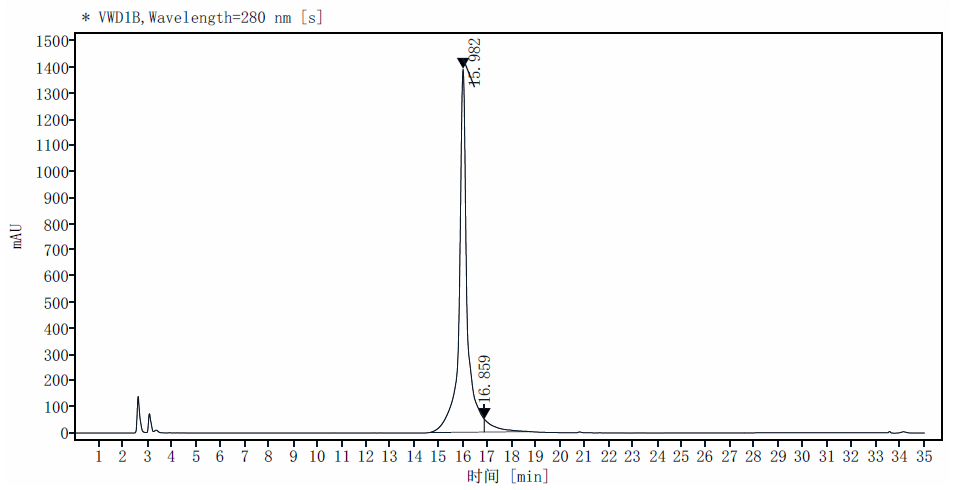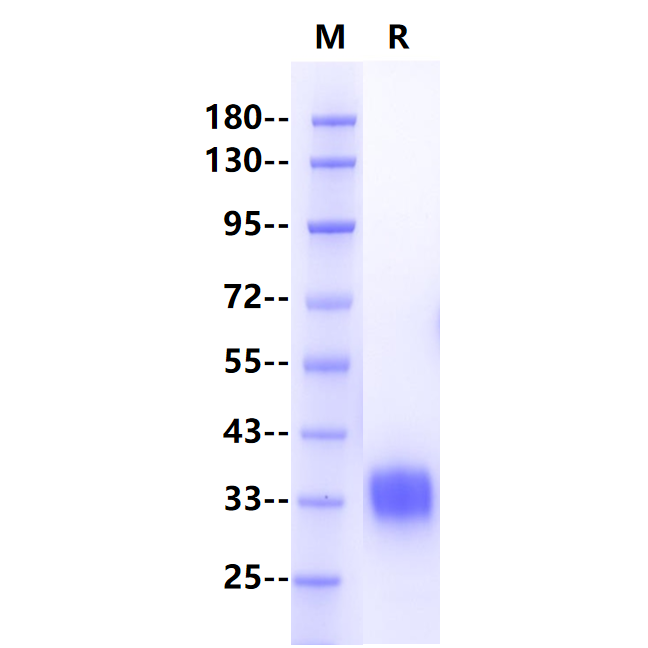Product Details
Product Details
Product Specification
| Species | Human |
| Synonyms | Adiponectin; 30 kDa Adipocyte Complement-Related Protein; Adipocyte complement-related 30 kDa protein; ACRP30; Adipocyte; C1q and Collagen Domain-Containing Protein; Adipose Most Abundant Gene Transcript 1 Protein; apM-1; Gelatin-Binding Protein; ADIPOQ; ACDC; ACRP30; APM1; GBP28 |
| Accession | Q15848 |
| Amino Acid Sequence | ETTTQGPGVLLPLPKGACTGWMAGIPGHPGHNGAPGRDGRDGTPGEKGEKGDPGLIGPKGDIGETGVPGAEGPRGFPGIQGRKGEPGEGAYVYRSAFSVGLETYVTIPNMPIRFTKIFYNQQNHYDGSTGKFHCNIPGLYYFAYHITVYMKDVKVSLFKKDKAMLFTYDQYQENNVDQASGSVLLHLEVGDQVWLQVYGEGERNGLYADNDNDSTFTGFLLYHDTNGGGSHHHHHH |
| Expression System | HEK293 |
| Molecular Weight | 36 kDa(Reducing) |
| Purity | >95%, by SDS-PAGE under reducing conditions |
| Endotoxin | <0.1EU/μg |
| Conjugation | Unconjugated |
| Tag | His Tag |
| Physical Appearance | Lyophilized Powder |
| Storage Buffer | PBS, pH7.4 |
| Reconstitution | Reconstitute at less than 1 mg/mL according to the size in ultrapure water after rapid centrifugation. |
| Stability & Storage | · 12 months from date of receipt, lyophilized powder stored at -20 to -80℃. · 3 months, -20 to -80℃ under sterile conditions after reconstitution. · 1 week, 2 to 8℃ under sterile conditions after reconstitution. · Please avoid repeated freeze-thaw cycles. |
Background
Adiponectin(ADPN) is a hormone secreted by adipocytes that regulates energy homeostasis and glucose and lipid metabolism. Adiponectin is a new member of the family of soluble defense collagens, in hematopoiesis and immune responses. It is an important negative regulator in hematopoiesis and immune systems and raise the possibility that it may be involved in ending inflammatory responses through its inhibitory functions. Adiponectin is mapped to 3q27 and can protect the organism from systemic inflammation by promoting the clearance of early apoptotic cells by macrophages through a receptor-dependent pathway involving calreticulin. The standard product used in this kit is the product of gene recombination, consisting of 226(19-244) amino acids with the molecular mass of 36KDa after glycosylation.
Picture
Picture
SDS-PAGE

RP-HPLC




